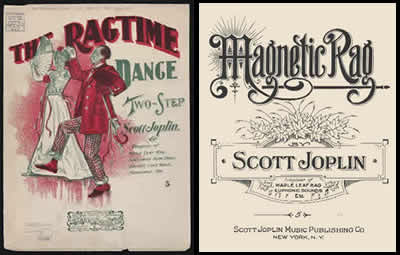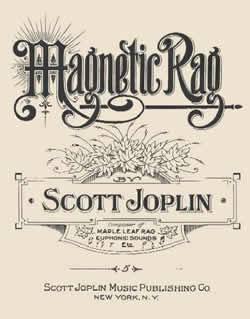Dance Stage 1
Overview

Song sheet covers: The Ragtime Dance (1906) and Magnetic Rag (1914) by Scott Joplin
©Public domain
Students explore the steps and movements of ragtime era dances. They compose and perform their own dance sequences.
Teaching and learning activities

Magnetic Rag (1914) by Scott Joplin
©Public domain
What steps and movements were used in dances during the First World War?
Perform, compose and appreciate using ragtime dances as stimuli.
Explore the movements of American pair and group social ragtime dances of the Ragtime era, 1910 to 1920, by watching selected excerpts from the YouTube video (link below).
Notice how the basic movements include one and two steps with fast and slow beats.
Discuss the different motifs used in the dance movements. Students can learn the Grizzly Bear and Castle Walk.
Instruct students to think up their own dance sequences from the basic steps of Grizzly Bear, Castle Walk, Tango, Maxixe or Hesitation Waltz steps as a basis.
Direct students to perform their dances for each other and talk about them.
Resources:
Dances of the Ragtime Era 1910–1920 I Except from How To Dance Through Time, Vol II
Learning concepts
These additional questions can be used for discussion or further investigations.
Community
Why did communities gather together for dances during the First World War? How would people feel when attending community dances during war time?
Syllabus links
DAS1.1 Performs dances demonstrating expressive qualities and control over a range of locomotor and non-locomotor movement.
DAS1.2 Explores and selects movement using the elements of dance to express ideas, feelings or moods.
DAS1.3 Gives personal opinions about the dances and their purpose that they view and/or experience.